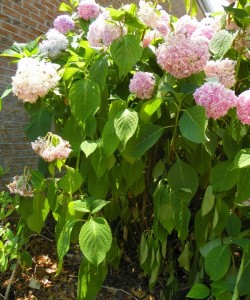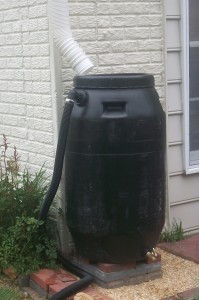Helping Your Yard Survive Drought
go.ncsu.edu/readext?307409
en Español / em Português
El inglés es el idioma de control de esta página. En la medida en que haya algún conflicto entre la traducción al inglés y la traducción, el inglés prevalece.
Al hacer clic en el enlace de traducción se activa un servicio de traducción gratuito para convertir la página al español. Al igual que con cualquier traducción por Internet, la conversión no es sensible al contexto y puede que no traduzca el texto en su significado original. NC State Extension no garantiza la exactitud del texto traducido. Por favor, tenga en cuenta que algunas aplicaciones y/o servicios pueden no funcionar como se espera cuando se traducen.
Português
Inglês é o idioma de controle desta página. Na medida que haja algum conflito entre o texto original em Inglês e a tradução, o Inglês prevalece.
Ao clicar no link de tradução, um serviço gratuito de tradução será ativado para converter a página para o Português. Como em qualquer tradução pela internet, a conversão não é sensivel ao contexto e pode não ocorrer a tradução para o significado orginal. O serviço de Extensão da Carolina do Norte (NC State Extension) não garante a exatidão do texto traduzido. Por favor, observe que algumas funções ou serviços podem não funcionar como esperado após a tradução.
English
English is the controlling language of this page. To the extent there is any conflict between the English text and the translation, English controls.
Clicking on the translation link activates a free translation service to convert the page to Spanish. As with any Internet translation, the conversion is not context-sensitive and may not translate the text to its original meaning. NC State Extension does not guarantee the accuracy of the translated text. Please note that some applications and/or services may not function as expected when translated.
Collapse ▲
Wilted leaves are one of the first signs of water stress. Hydrangeas are more drought sensitive than most shrubs.
Spotty showers have brought much needed rain to some gardens in the Piedmont but not enough for most. Many areas are several inches below normal rainfall amounts for this time of year, leaving landscape and garden plants water stressed. Signs of water stress include stunting, wilting, yellowing or browning leaves, early leaf drop, dead stems and branches, and reduced flower, fruit, and seed production. How you care for your yard during drought will have a huge effect on how well plants recover once the rain returns. The following tips will help you care for your plants during drought.
Do’s and Dont’s During Drought
Don’t do anything during drought that will encourage additional growth or add to the stress plants are already under. This is not the time to set out new plants or seed areas. You should also avoid fertilizing lawns and landscapes. While it is okay to fertilize container plants or vegetable gardens that you are watering regularly, cut the amount by half of what you would normally apply. Another practice to avoid during drought is pruning, except to remove dead or dying branches. And this is also not the time to spray herbicides, which will have little to no effect on wilted or drought stressed weeds.
Things you do want to do during drought include making sure all landscape beds have a 2” to 4” layer of mulch. A 2” layer of mulch will be sufficient for vegetable gardens and flower beds. A good layer of mulch will conserve moisture and keep soil temperatures cooler.
You may also consider removing sick or poorly performing plants, since they are less likely to survive drought than healthy plants. In beds that are overcrowded, consider removing some plants to reduce the amount of competition for the limited water that is available. Pull weeds to prevent them taking the water that could keep your plants alive. You may also consider extending the mulched area around trees and shrubs to reduce competition with turf roots.
What and When to Water
If you are able to water during drought keep in mind that irrigation can never replace rainfall. You will not be able to keep your yard as lush and full during drought as it would be during a normal summer. Consider allowing your lawn to go dormant. Most grasses are fairly drought resilient and will recover when rainfall returns. If they don’t, lawns can be reseeded with cool season grasses such as fescue in the fall.
To remain productive, fruits and vegetables will need to be watered on a regular basis. One inch of water per week is usually needed to keep edible plants healthy and productive. Focus on watering vegetables that still have a long season of production ahead and are not infected with insects and diseases. Fruit trees and bushes need water this time of year to set flower buds that will produce next year’s fruits.
Set priorities for watering ornamentals. Consider what you are willing to lose and what it would cost to replace, as well as how feasible it would be to keep plants with high water requirements alive with little to no rainfall. Flowering annuals will die at the end of summer anyway so why waste water on them? While most established trees and shrubs can tolerate some drought with little long term damage, it may not be realistic to keep drought sensitive plants like hydrangeas, Japanese maples, azaleas, and dogwoods alive in sandier soils through extended drought. If you do lose some of these plants this year, replace them with more drought resilient species this fall.
Trees and shrubs planted within the last year or two will be the most drought sensitive since their root systems are not fully established. They should be given top priority for watering. Other plants that may make your top priority list include rare or unusual specimens, plants that would be very expensive to replace, or those that have strong sentimental value.
When you do water, apply water slowly so it can soak deep into the soil profile rather than run off the surface. Since plant roots grow where water is available, watering deeply will encourage roots to grow deeper into the soil, making plants more drought resilient.
There are a couple of ways to water slowly and deeply. One is to use soaker hoses, which gradually emit water from small holes on their surface. Lay soaker hoses on the ground around the base of plants. For larger trees and shrubs you will need to loop the hose around each plant a couple of times to cover more of the root system area. Allow hoses to run for up to an hour, then wait an hour and dig into the soil to see how deeply the water has penetrated. If only the top few inches are moist, allow the hoses to run another hour. Clay soils usually take longer to thoroughly wet than sandier soils. Your goal is to thoroughly moisten at least the top 6”-8” of the soil.
Another way to apply water so it will soak into the soil is to use special bags sold as ‘Treegators’ or old buckets with holes in the bottom. Treegators are designed to fit around the trunks of young trees. Their permeable bottoms allow water to slowly leak out when filled. Five gallon buckets that have had several small holes drilled into the bottom can be used with the same effect. Evenly space three to five buckets around a shrub or tree and fill them with water, which will slowly drain out of the holes and into the soil. For larger plants, use more buckets. For smaller plants like perennials or vegetables, a couple of old milk jugs or two liters bottles with holes punched in the bottom will work. These can even be partially buried and left in place for convenience.
Another tip for surviving drought is to install rain barrels, so you can capture any rainfall that does fall and use it to water plants later on. This is also a good time to take note of less drought tolerant plants. If feasible, move them in the fall so all of your drought sensitive plants are growing together in one area, making it easier to water them in the future. Or replace these plants with more drought resilient species.
Learn More!
For more suggestions on how you can conserve water at home and in your yard, take the 40 Gallon Challenge. Visit www.40gallonchallenge.org, where you can pledge to adopt water-saving practices and see how many gallons of water you can expect to save.
To find out more about cisterns and rainwater harvesting, visit the NC Extension Rainwater Harvesting website, http://www.bae.ncsu.edu/topic/waterharvesting/, or download a copy of the publication “Rainwater Harvesting: Guidance for homeowners” here: http://www.bae.ncsu.edu/stormwater/PublicationFiles/WaterHarvestHome2008.pdf
Learn more about indoor and outdoor water conservation from these great resources:
- Save Water NC: http://www.savewaternc.org/
- Water Use It Wisely: http://www.wateruseitwisely.com/
- Water Wise Works!: http://www.tarheelgardening.com/waterwise.html
Use Extension Search to find research based information from Cooperative Extension systems across the U.S.





